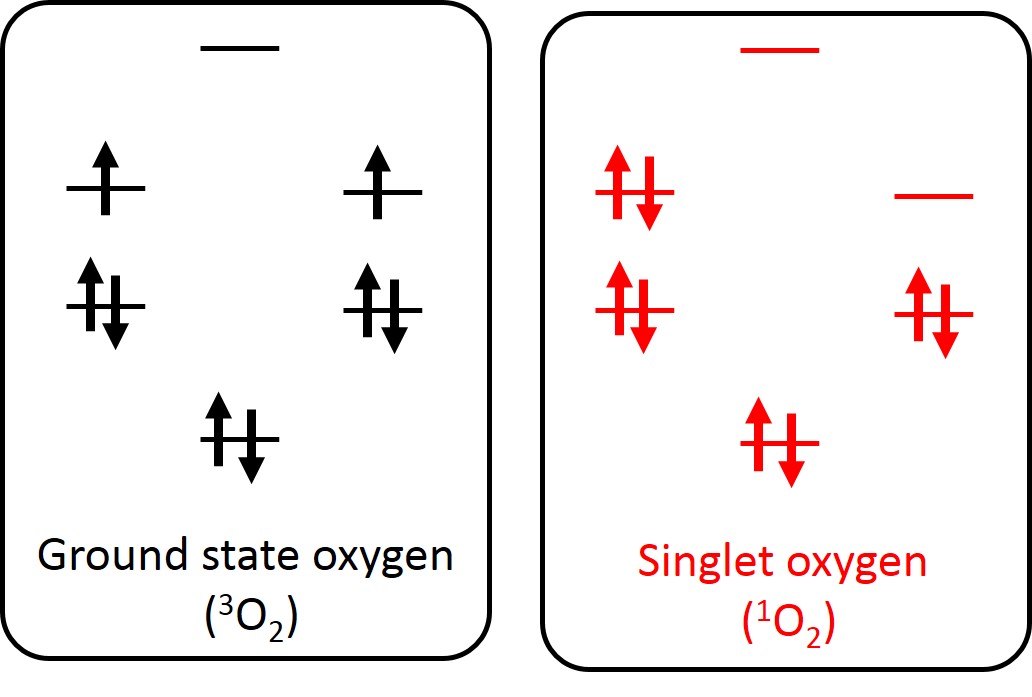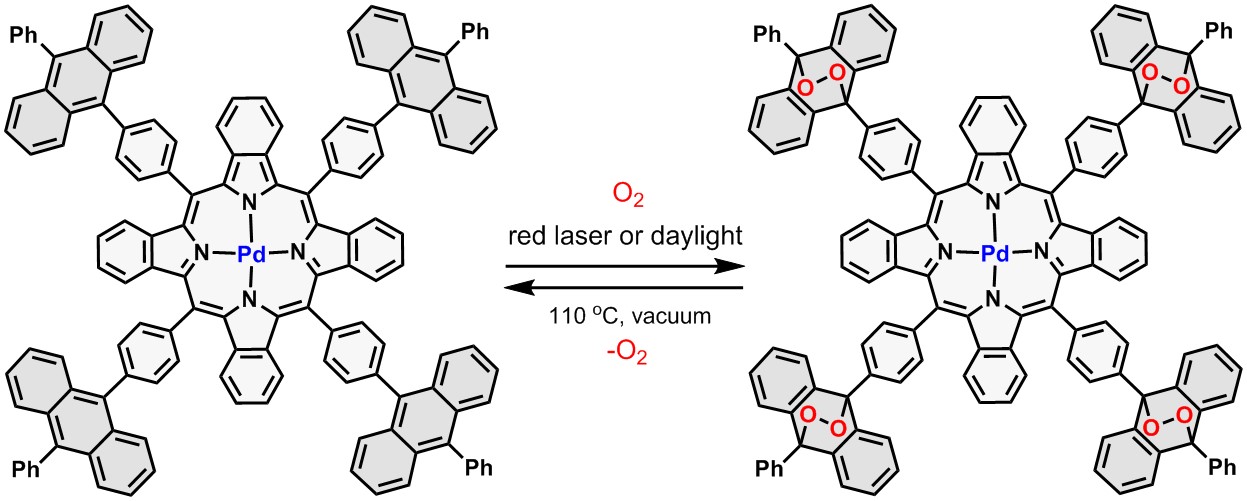Singlet oxygen
 Singlet oxygen is an electronically excited state of molecular oxygen which is less stable than ground state (triplet) oxygen. Typically generated via energy transfer from the triplet excited state of a photosensitizer to the oxygen molecule. Singlet oxygen is highly reactive and is used, for example, to destroy cancer cells in photodynamic therapy.
Singlet oxygen is an electronically excited state of molecular oxygen which is less stable than ground state (triplet) oxygen. Typically generated via energy transfer from the triplet excited state of a photosensitizer to the oxygen molecule. Singlet oxygen is highly reactive and is used, for example, to destroy cancer cells in photodynamic therapy.
Reversible binding of singlet oxygen
I am developing molecular systems capable of generating, binding and releasing singlet oxygen molecules. An example of such system – tetrabenzoporphyrin with appended anthracene groups is shown below. When irradiated with a laser or kept under daylight in air-saturated solution, this compound forms corresponding endoperoxide – a product of [4+2] cycloaddition reaction between singlet oxygen and anthracene. The release of bound oxygen molecules can be achieved upon heating.
 Binding and release of singlet oxygen by palladium(II) tetrabenzoporphyrin. |
Stability of endoperoxides depends on the molecular structure of the parent organic molecule. Its lifetime can be readily tuned by means of chemical modification from several hours to several days. In addition, the lifetime of the endoperoxide strongly depends on the temperature. Thus, reactive oxygen can be ‘stored’ at low temperature for long periods of time and then ‘released’ by decomposition upon heating. This process can be used as a method for generation of singlet oxygen in photodynamic therapy. We have demonstrated that corresponding molecular system are capable to generate singlet oxygen upon irradiation, store and slowly release singlet oxygen in biological media at room temperature.
 Pyridone appended porphyrins - controlled singlet oxygen release sensitizers for photodynamic therapy. |
Sensing and bioimaging of singlet oxygen
Intracellular singlet oxygen is thought to be involved in physiological and pathological processes such as signaling, immune response, and induction of gene expression. However, a detailed molecular understanding of its roles could so far not be obtained due to the lack of suitable detection and imaging techniques. Fluorescein-based Singlet Oxygen Sensor Green (SOSG®), the only available commercial probe, was shown to be cell impermeable, to be susceptible to photodecomposition, and to generate 1O2 under light irradiation.
Probes for singlet oxygen are highly demanded in different research fields including immunology, oxidative stress, pharmacology and cancer research. Currently, I am investigating new BODIPY-based probes to monitor a singlet oxygen generation. Interaction of these probes with 1O2 is accompanied by formation of highly fluorescent product, allowing for visualization of singlet oxygen generation process. Such fluorogenic effect was demonstrated to occur in human breast cancer cells.
 Reactions of BODIPY probe with singlet oxygen leading to fluorogenic response in living cells. |
Currently, I aim to address a key problem in the design of selective probes, namely, prevention of self-sensitization of singlet oxygen by the probes. In addition, I optimize cell permeability and fluorescent response towards 1O2.
